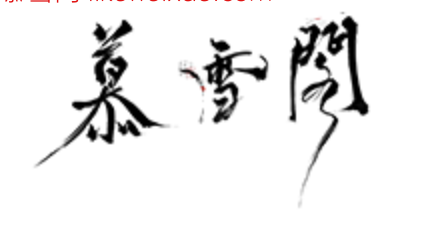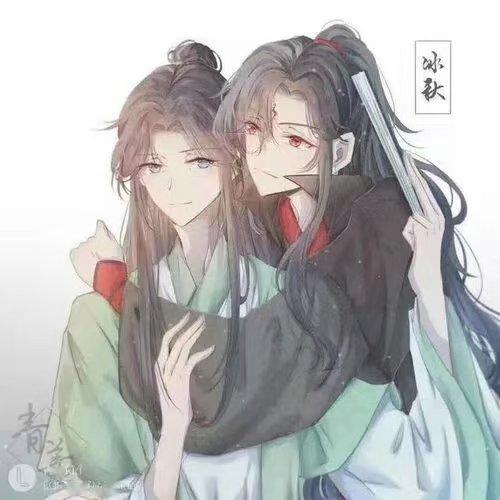什么是版权?
版权是一种知识产权,一旦作者以有形的表达形式修复作品,就保护原创作品。在版权法中,有很多不同类型的作品,包括绘画、照片、插图、音乐作品、录音、计算机程序、书籍、诗歌、博客文章、电影、建筑作品、戏剧等等!
版权是原创性和固定性
原创作品
当作品由人类作者独立创作并具有最低程度的创造力时,它们就是原创的。独立创作只是意味着你自己创造它,不用复制。最高法院曾表示,要具有创造力,作品必须具有“火花”和“小”的创造力。然而,有些东西没有创意,例如:标题、名称、短短语和口号;熟悉的符号或设计;仅是排版装饰、字母或着色的变体;以及仅是成分或内容的列表。永远记住,版权保护表达,而永远不保护想法、程序、方法、系统、过程、概念、原则或发现。
固定工程
当作品(由作者或作者授权)在足够永久的媒介中捕获时,作品就会被固定,这样作品就可以被感知、复制或传播的时间超过很短。例如,当你把它写下来或记录下来时,一件作品就会被修复。
谁是版权所有者?
每个人都是版权所有者。一旦你创作并修复了原创作品,比如拍照、写一首诗或博客,或者录制一首新歌,你就是作者和所有者。
公司、组织和除作品创作者之外的其他人也可以是版权所有者。版权法允许通过“雇佣作品”获得所有权,该作品规定员工在就业范围内创作的作品归雇主所有。雇佣工作原则也适用于某些独立承包商关系,适用于某些类型的委托工作。
版权所有权也可以来自转让等合同或遗嘱和遗赠等其他类型的转让。
版权提供了哪些权利?
美国版权法为版权所有者提供了以下排他性权利:
以副本或录音机复制作品。
根据作品准备衍生作品。
通过出售或其他所有权转让或出租、租赁或借出向公众分发作品的副本或录音。
如果作品是文学、音乐、戏剧或舞蹈作品;哑剧;或电影或其他视听作品,则公开表演。
如果作品是文学、音乐、戏剧或舞蹈作品;哑剧;或绘画、图形或雕塑作品,请公开展示。这项权利也适用于电影或其他视听作品的个别图像。
如果作品是录音,则通过数字音频传输公开表演作品。
版权还为版权所有者提供了授权他人行使这些排他性权利的权利,但受某些法定限制。
版权保护持续多久?
版权保护的长度取决于作品的创作时间。根据现行法律,1978年1月1日或之后创作的作品,作者的版权期限为终身,加上作者去世后七十年。如果作品是联合作品,则该期限在最后一位幸存的作者去世后持续七十年。对于雇佣作品和匿名或假名作品,版权保护为出版后95年或创作后120年,以较短者为准。1978年之前创作的作品有不同的时间框架。在我们的版权期限通告中了解更多关于版权期限的信息。
我什么时候可以使用不属于我的作品?
协议、例外和限制
重要的是要知道,我们都是版权用户。当我们阅读书籍、看电影、听音乐或使用视频游戏或软件时,我们使用的是受版权保护的作品。
因此,即使您不是作品的所有者,您仍然可以使用它。除了购买或许可作品(或其他一些寻求使用作品许可的方式),您还可以使用《版权法》的例外和限制之一,或依赖公共领域的作品。
第107-122条中发现的《版权法》的例外和限制包括公平使用、“首次销售原则”、图书馆和档案馆的一些复制、某些表演和展示、有线电视和卫星广播节目传输等。对更多关于合理使用的信息感兴趣吗?看看我们的公平使用指数。版权保护豁免的完整列表可以在《美国法典》第17章第1章中找到。
您还可以使用公共领域的作品。公共领域的作品是指那些从未受版权保护的作品(如事实或发现),或保护期限因过期或所有者未满足之前要求的手续而终止的作品。目前,所有1926年之前的美国作品都属于公共领域,因为这些作品的版权保护已经过期。
什么是版权注册?
一旦修复,版权自动存在于原始作者作品中,但版权所有者可以采取措施加强保护。最重要的一步是注册工作。注册作品不是强制性的,但对于美国作品来说,注册(或拒绝)是通过诉讼强制执行专有版权所必需的。及时注册还允许版权所有者在出现诉讼时寻求某些类型的金钱损害赔偿和律师费,并提供注册证书上信息正确的推定。
版权注册也为公众提供了整体价值。它通过允许人们找到版权所有权信息来促进许可市场,并向公众提供有人声称受到版权保护的通知。它还记录了这个国家的创造力。
在美国,只有一个地方可以注册版权索赔:版权办公室。有关注册福利和程序的更多信息,请参阅我们的版权注册通告。
其他知识产权呢?
专利和商标是其他类型的知识产权,可能涵盖作品,并与版权资格分开考虑。例如,政府授予的专利保护某些发明或发现、制造物品设计和植物品种。另一方面,商标法保护商品或服务交易中使用的单词、名称、符号或设备,以表明商品的来源,并将其与其他商品或服务区分开来。有关这些其他类型的知识产权的更多信息,请查看美国专利和商标局的专利和商标信息。
如果所有权发生变化怎么办?
记录文件
版权办公室还记录与版权相关的文件。这被称为记录,意味着办公室审查和接受文件,并保留人们提供的文件的记录。记录涉及三种不同类型的文件:版权所有权转让、与版权相关的其他文件以及终止通知,作者或其继承人在终止某些转让或许可时使用这些文件。
什么是法定许可?
法定许可证是《版权法》中的一些限制。它们与音乐作品、录音以及有线电视和卫星节目的某些用途有关。有关音乐作品和录音的全面信息,我们有许多有用的资源,如我们的音乐作品和录音通告以及我们的专用音乐现代化法案页面。有关电缆和卫星使用的信息,请访问我们的许可部门页面。
What is Copyright?
Copyright is a type of intellectual property that protects original works of authorship as soon as an author fixes the work in a tangible form of expression. In copyright law, there are a lot of different types of works, including paintings, photographs, illustrations, musical compositions, sound recordings, computer programs, books, poems, blog posts, movies, architectural works, plays, and so much more!
Copyright is originality and fixation
Original Works
Works are original when they are independently created by a human author and have a minimal degree of creativity. Independent creation simply means that you create it yourself, without copying. The Supreme Court has said that, to be creative, a work must have a “spark” and “modicum” of creativity. There are some things, however, that are not creative, like: titles, names, short phrases, and slogans; familiar symbols or designs; mere variations of typographic ornamentation, lettering, or coloring; and mere listings of ingredients or contents. And always keep in mind that copyright protects expression, and never ideas, procedures, methods, systems, processes, concepts, principles, or discoveries.
Fixed Works
A work is fixed when it is captured (either by or under the authority of an author) in a sufficiently permanent medium such that the work can be perceived, reproduced, or communicated for more than a short time. For example, a work is fixed when you write it down or record it.
Who is a copyright owner?
Everyone is a copyright owner. Once you create an original work and fix it, like taking a photograph, writing a poem or blog, or recording a new song, you are the author and the owner.
Companies, organizations, and other people besides the work’s creator can also be copyright owners. Copyright law allows ownership through “works made for hire,” which establishes that works created by an employee within the scope of employment are owned by the employer. The work made for hire doctrine also applies to certain independent contractor relationships, for certain types of commissioned works.
Copyright ownership can also come from contracts like assignments or from other types of transfers like wills and bequests.
What rights does copyright provide?
U.S. copyright law provides copyright owners with the following exclusive rights:
•Reproduce the work in copies or phonorecords.
•Prepare derivative works based upon the work.
•Distribute copies or phonorecords of the work to the public by sale or other transfer of ownership or by rental, lease, or lending.
•How long does copyright protection last?
•The length of copyright protection depends on when a work was created. Under the current law, works created on or after January 1, 1978, have a copyright term of life of the author plus seventy years after the author’s death. If the work is a joint work, the term lasts for seventy years after the last surviving author’s death. For works made for hire and anonymous or pseudonymous works, copyright protection is 95 years from publication or 120 years from creation, whichever is shorter. Works created before 1978 have a different timeframe. Learn more about copyright duration in our Duration of Copyrights Circular.
•
•Perform the work publicly if it is a literary, musical, dramatic, or choreographic work; a pantomime; or a motion picture or other audiovisual work.
•Display the work publicly if it is a literary, musical, dramatic, or choreographic work; a pantomime; or a pictorial, graphic, or sculptural work. This right also applies to the individual images of a motion picture or other audiovisual work.
•Perform the work publicly by means of a digital audio transmission if the work is a sound recording.
Copyright also provides the owner of copyright the right to authorize others to exercise these exclusive rights, subject to certain statutory limitations.
When can I use works that are not mine?
Agreements, Exceptions, and Limitations
It is important to know that we are all also copyright users. When we read books, watch movies, listen to music, or use videogames or software, we are using copyright-protected works.
So, even if you are not the owner of a work, you still may be able to use it. In addition to buying or licensing works (or some other way of seeking permission to use the work), you can also use one of the Copyright Act’s exceptions and limitations, or rely on works in the public domain.
The Copyright Act’s exceptions and limitations found in sections 107-122 include fair use, the “first sale doctrine,” some reproductions by libraries and archives, certain performances and displays, broadcast programming transmissions by cable and satellite, to name a few. Interested in more information on fair use? Take a look at our Fair Use Index. The complete list of exemptions to copyright protection can be found in chapter 1 of Title 17 of the United States Code.
You can also use works that are in the public domain. Works in the public domain are those that are never protected by copyright (like facts or discoveries) or works whose term of protection has ended either because it expired or the owner did not satisfy a previously required formality. Currently, all pre-1926 U.S. works are in the public domain because copyright protection has expired for those works.
What is copyright registration?
Copyright exists automatically in an original work of authorship once it is fixed, but a copyright owner can take steps to enhance the protections. The most important step is registering the work. Registering a work is not mandatory, but for U.S. works, registration (or refusal) is necessary to enforce the exclusive rights of copyright through litigation. Timely registration also allows copyright owners to seek certain types of monetary damages and attorney fees if there is a lawsuit, and also provide a presumption that information on the registration certificate is correct.
Copyright registration also provides value to the public overall. It facilitates the licensing marketplace by allowing people to find copyright ownership information, and it provides the public with notice that someone is claiming copyright protection. It also provides a record of this nation’s creativity.
There is only one place to register claims to copyright in the United States: the Copyright Office. For more information on registration benefits and procedures, please see our Copyright Registration Circular.
What about other intellectual property rights?
Patent and trademark are other types of intellectual property that may cover works and are considered separately from copyright eligibility. For example, patents, which are granted by the government, protect certain inventions or discoveries, designs for articles of manufacture, and plant varietals. Trademark law, on the other hand, protects words, names, symbols, or devices used in trade with goods or services to indicate the source of the goods and to distinguish them from the goods or services of others. For more information on these other types of intellectual property, take a look at the United States Patent and Trademark Office's patent and trademarkinformation.
What if there is change in ownership?
Document Recordation
The Copyright Office also records documents related to Copyright. This is known as Recordation, and means that the Office reviews and accepts documents, and keeps a record of, the documents people provide. Recordation relates to three different kinds of documents: transfers of copyright ownership, other documents relating to a copyright, and notices of termination, which authors or their heirs use when terminating certain transfers or licenses.
What is statutory licensing?
Statutory licenses are some of the limitations in the Copyright Act. They relate to certain uses of musical compositions, sound recordings, and cable and satellite programming. For comprehensive information on musical compositions and sound recordings, we have a number of useful resources like our Musical Compositions and Sound Recordings Circular and our dedicated Music Modernization Act page. For information on cable and satellite uses, visit our Licensing Division page.


